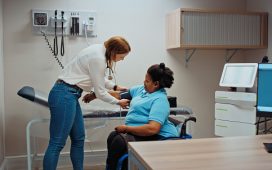Recognizing the Signs of Bladder Cancer Early
Bladder cancer might be a daunting subject, but understanding its early signs and symptoms can be your first line of defense. Like a lighthouse in a storm, recognizing these signals can guide you safely through turbulent waters. Let’s embark on this journey of awareness together.
Understanding Bladder Cancer
Bladder cancer begins when abnormal cells grow uncontrollably in the bladder, the organ responsible for storing urine. There are different types of bladder cancer, with transitional cell carcinoma being the most common. Understanding the nature of bladder cancer helps in recognizing its early signs, which can lead to timely diagnosis and treatment. Awareness of the disease’s progression and potential impact is crucial for making informed health decisions.
Common Symptoms
Blood in the urine, medically known as hematuria, is often the first and most common symptom of bladder cancer. This blood can cause the urine to appear pink, red, or dark brown. Other symptoms may include frequent urination, a strong urge to urinate, and painful urination. These symptoms are not exclusive to bladder cancer but should prompt a medical evaluation to rule out serious conditions.
The Importance of Early Detection
Catching bladder cancer early dramatically increases treatment success rates. Early detection can mean the difference between a simple treatment regimen and a more invasive one. It allows for a wider range of treatment options and a higher likelihood of complete recovery. Regular check-ups and being attentive to bodily changes can aid in spotting the disease before it progresses.
Risk Factors to Consider
Several risk factors can increase the likelihood of developing bladder cancer. Smoking is the most significant risk factor, as it exposes the bladder to harmful chemicals. Occupational exposure to certain industrial chemicals, a family history of bladder cancer, and chronic bladder inflammation are other notable risk factors. Understanding these can help in taking preventive measures and prioritizing screenings.
Diagnostic Tests and Procedures
Diagnosing bladder cancer typically involves a combination of tests and procedures. A urinalysis can detect traces of blood in the urine, while cystoscopy allows doctors to examine the bladder’s interior directly. Imaging tests such as CT scans and MRIs provide detailed pictures of the bladder and surrounding tissues, and a biopsy can confirm the presence of cancerous cells.
Treatment Options Available
The treatment for bladder cancer depends on its stage and grade. Early-stage bladder cancer might be treated with surgery to remove the tumor, while more advanced stages may require a combination of surgery, chemotherapy, radiation therapy, and immunotherapy. Personalized treatment plans are essential to address the specific needs and conditions of each patient.
Lifestyle Changes for Prevention
Adopting certain lifestyle changes can help reduce the risk of bladder cancer. Quitting smoking is paramount, as it significantly decreases exposure to carcinogens. Maintaining a healthy diet rich in fruits and vegetables, staying hydrated, and avoiding exposure to harmful chemicals are additional preventive measures. Regular medical check-ups can also aid in early detection and prevention.
Living with Bladder Cancer
Living with bladder cancer can be challenging, but many people lead fulfilling lives post-diagnosis. It involves managing treatment side effects, attending regular follow-ups, and making lifestyle adjustments. Emotional support from family, friends, and support groups can provide comfort and strength. Staying informed and engaged with healthcare providers is crucial for effective disease management.
Support and Resources
Numerous resources are available for those affected by bladder cancer. Support groups, both online and in-person, offer a sense of community and shared experience. Organizations like the Bladder Cancer Advocacy Network provide educational materials, advocacy, and support services. Patients and families are encouraged to reach out for help and take advantage of these resources.
Conclusion
Recognizing the signs of bladder cancer early can significantly improve the chances of successful treatment and recovery. Awareness, regular medical check-ups, and proactive health measures are vital components in battling this disease. By staying informed and vigilant, individuals can navigate the challenges of bladder cancer more effectively and improve their quality of life.
FAQs
-
What are the first signs of bladder cancer?
- The first signs often include blood in the urine, frequent urination, and painful urination.
-
Is bladder cancer treatable if caught early?
- Yes, early detection increases the likelihood of successful treatment.
-
What lifestyle changes can help prevent bladder cancer?
- Quitting smoking, maintaining a healthy diet, and avoiding harmful chemicals can help reduce the risk.
-
Where can I find support if diagnosed with bladder cancer?
- Support groups, healthcare providers, and organizations like the Bladder Cancer Advocacy Network can offer assistance and resources.









